The Technology Of Augmented Reality. Implementation considerations for GPS navigation
Good evening, dear harrowdene! Not long ago I read a rather voluminous work on the subject "Technology of Augmented Reality. Implementation considerations for GPS-navigation" and would like to introduce the highlights of the community. The main objective is obtaining a reasonable criticism of the author. So, with your permission and the permission of the author — Laryushino Yulia Dmitrievna, I start.
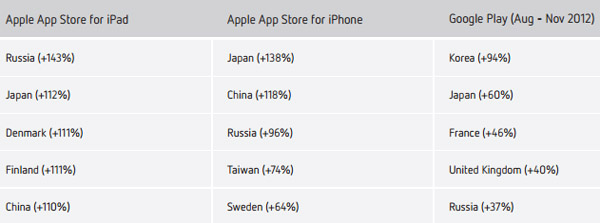
For people uninformed with the subject: Augmented reality (eng. augmented reality, AR) is the term referring to all projects to Supplement reality by any virtual elements. Augmented reality is a component of a mixed reality (eng. mixed reality), which also includes "augmented virtuality" (when real objects are integrated into virtual environment). The most common examples of augmented reality — parallel facial colored line, showing the presence of the nearest fielder to the gate when broadcast football matches, the arrows indicating the distance from the place kick to the gate, drawn by the trajectory of the puck during a hockey game, etc.
A cursory look at the market of applications that use the technology, I came to the conclusion that these applications are either some entertainment, or represent some Reality Browser(Layar, Wikitude, etc.), or are too specialized for use in everyday life(for example, the application of the Boeing company for wiring). However, I was interested in quite an interesting concept, which has been repeatedly brought to life in foreign markets, however, full implementation of these ideas for CIS or former Soviet Union I have not found. As many might guess, we are talking about the use of technology for GPS. What exactly I mean? For me much better say screenshots foreign implementations:
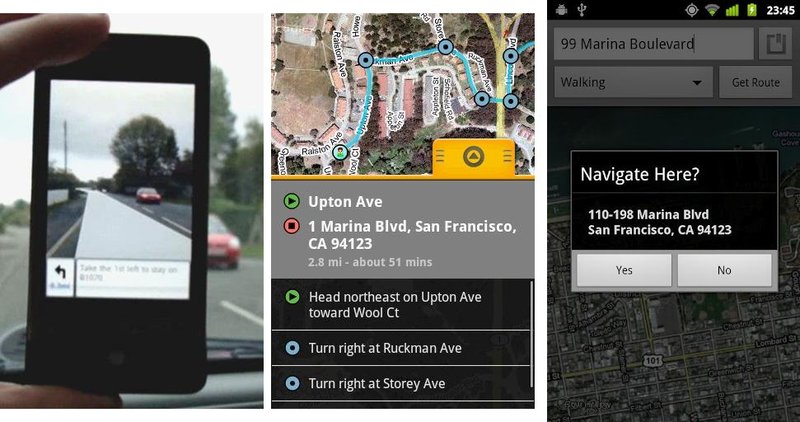
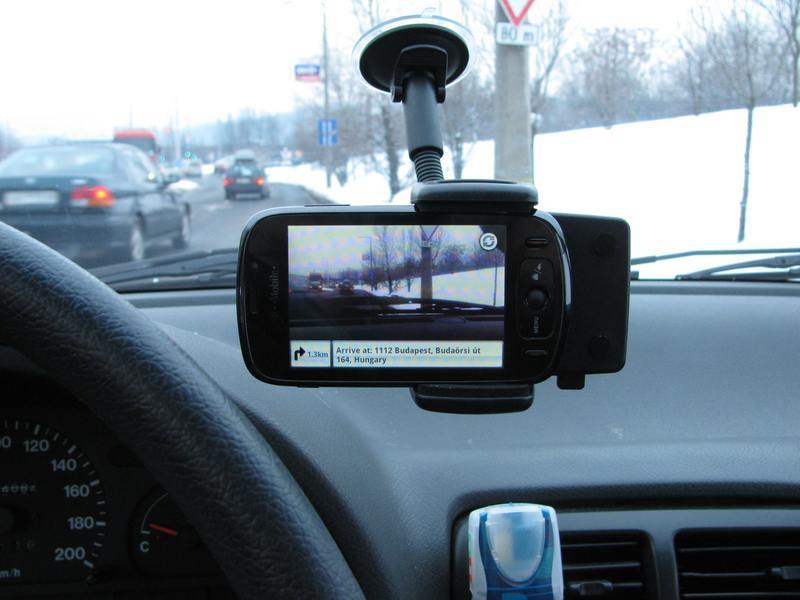

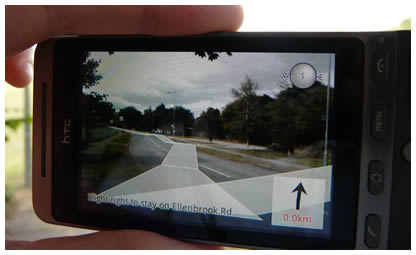
In my opinion, such applications can have a beneficial effect on the traffic situation as drivers when using the common Navigator quite often to watch the display, thereby being distracted from the traffic situation. In matters of road safety, as you know, is each fraction of a second.
Examining the mobile OS market, I came to the conclusion that the process of implementation in a limited budget is to start with the Android platform in favor of such a choice tells a lot of facts that are not hard to find online, but if you're too lazy to look for, ask, I will give references to sources and insights on each of them. Here are just entertaining the result of the research company DISTIMO:
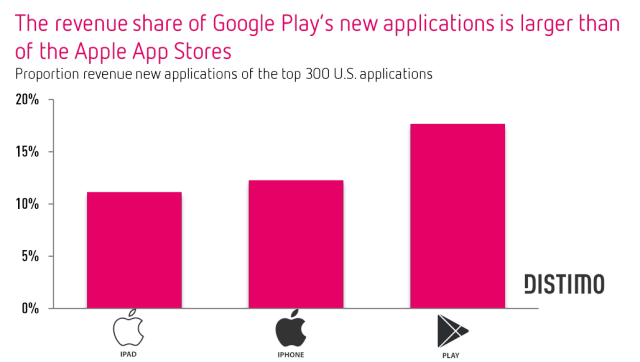
This statistic only speaks about new applications, however, according to some experts, the situation of Google Play market will soon become more favorable than that on the AppStore:
The main conclusions from the analysis of the market:
the
A rather interesting phase of the work was the definition of the target audience, and as such its behaviour, which can affect the implementation strategy.
It is sensible to assume that the minimum age of the target audience — 18 years, that is, people who are able to drive the vehicles. According to research group TNS Global as of 2011, men accounted for approximately 60% of all drivers. Interestingly, mostly men from 25 to 40 years with higher education. However, for the period from 2006 to 2011, the number of women drivers almost doubled with 1 700 000 in 2006 to 3 000 70 in 2011. The increase in the number of women drivers is still going on, so analysts predict that in the near future the percentage will be almost equal. However, the average age and social status remain unchanged for both men and women. The company BlueStacks has conducted an online survey on the basis of which later was made a portrait of a typical user of the Android operating system. The result of the study showed that the majority of android-device users are men. Contrary to the common belief that gadgets are the most sought-after teenagers and those who are not much over 20, the average age of a smartphone user is high enough — 30 years, and tablet, and even higher — 34 years. Based on the characteristics of the classes of consumers, we can conclude that it is necessary to focus on the so-called working and middle classes.
Working class:
the
Average grade:
the
Marketing Agency “?QUANS! Research” conducted detailed research into middle-class consumers, in which it was revealed that more than 40% aproching a car 2007 — 2011 release, more than 50% of respondents have a mobile phone or a smartphone worth more than 10,000 rubles.
Based on these data we can identify with the target audience of your application. People of middle and working class with average incomes and above-average incomes, with atomobile and smartphone in age from 22 to 40 years with higher education, usually married, or employed, or own small companies. As a rule, such people can be influenced by trends. If to speak about the attitude of the mobile applications market, these people are willing to pay, as a rule nemiscau price for popular applications which can make life easier or entertaining apps. Often the choice is based on the number of downloads, rating and comments of users more than the real value, and description.
In this section, was carried out an approximate calculation of the cost of creating applications based on average market prices and wages. I think this part is not particularly valuable, so write only the output.
Here I urge you to take care to provide as much legitimate criticism will lead a large part of the section, as it I doubt, and some data seem to be unreliable. Moreover, the possible presence of logical errors and incorrect conclusions.
When it comes to GPS navigation, not to forget about the problems associated with the use of such systems. Often, the currently available maps, in many places, may be inaccurate, and the information on them is outdated. In this case, to avoid errors in the trail, you need to delete the account of secondary roads. Your route may be, but you will definitely get to your desired destination.#
Undoubtedly, it is worth noting the issue with the accuracy of GPS-navigation: a "Classical" GPS sensor gives the minimum error from 3 to 30 m#, Respectively, using only data provided by the GPS satellites just pointless and you need to find a solution exactly for this application.
Since the main objective of augmented reality is the synthesis of real and virtual objects in space, there is the need to pre-digitize their data about the surrounding space. Registering the spatial geometrical characteristics of small spaces today has become the norm for a wide range of specialists. It's much, much harder when it comes to open spaces: as mutually located virtual and real objects which one is in the foreground?
In fact, such a technically complex idea, as the combination of technology supplements reality and GPS navigation has a lot of problems, because the technology of augmented reality has only recently begun active development, and GPS technology despite already being used for quite a long time so still not solved the problems with the accuracy of readings.
It is worth noting that these problems are inherent in almost all modern applications are based on the addition of reality, which in turn means that at least a partial solution to these problems can be turned into a pretty serious competitive advantages.
Modern smartphones are usually equipped with a built-in GPS module, so necessary for our application. To solve problems with the accuracy of the readings and as a result a more accurate display of required information proposed to use several tools: GPS module, built-in digital compass and a gyroscope. The combination of gyro and compass gives good results, but if you add the image recognition known in advance of landscape elements increases the accuracy up to the pixel level. The discrepancy is measured by pixels only because of the characteristics of the human brain and eyesight, able to detect the slightest slip when placing virtual objects in real space.# Thus, we can identify the main, according to the author, competitive advantage — accuracy of navigation and data display. This advantage is able to allocate the application not only from the number of similar(i.e., applications based on the addition of reality), but the GPS, because he left more of the methods of determining location based on different technologies.
Another common problem applications based on the technology lies in the fact that, as a rule, they try to cover a wide range of tasks, which leads to two negative consequences: low performance on mobile devices and the high complexity of development applications. The author studied in detail the most popular apps, such as Layar, AugSatNav, Wikitude, AlterGeo and tested them on a device that, by today's standards, average specifications(see Annex 1). I wonder what any serious problems with speed, stability, and user interface arose when the use of each application. According to the author, if you strictly limit the list of tasks of the applications to ensure accurate navigation, it is possible to significantly improve the quality of the application as a whole and its speed.
When using the default GPS in today's road conditions are quite acute issue of safety during use of the device. Indeed, quite often the driver has to watch the display device, thereby being distracted from the traffic situation. Let, the driver is distracted and for a split second, but as you know, every thousandth of a second sometimes can cost the health or even life. The proposed application, especially designed to solve this problem, because with its introduction of the driver even looking through the route will be able to follow the traffic situation, as all that is happening on the road displayed on the device screen with the running application in real time.
implementation Plan software based on the technology of Augmented reality for GPS navigation on the market applications Google Play
Assignment ideas: this project is designed to provide GPS navigation on the basis of modern mobile platforms, as well as increasing the level of road safety.
Market: Potential consumers of a software product are men and women from 22 to 40 years old with at least 1 car in the family with average incomes, owning a modern mobile device based on Android OS, equipped with a GPS module and built-in camera. Implementation is planned via the official Google Play app store.
Technology: Augmented reality, GPS, G-Sensor, computer vision.
Inventions: no.
and similar Products in Russia: no.
similar Products in the world: Wikitude Drive, AugSatNav, Layar
Advantages: high precision navigation, focus on one task, support maps of Russia.
Basic requirements: For the further development of the project should: establish a working group consisting of: 5 programmers, 2 designers of interfaces, 1 engineer, 1 Manager, 1 system administrator, 1 database administrator. The need for investment is: 1 474 000.
Stages of software implementation:
Anyway, I hope anyone interested in this theme, if Yes, then I will continue and post a more detailed review of key points. It should be noted that I'm pretty serious about analysis and description stages of the implementation.
Article based on information from habrahabr.ru

For people uninformed with the subject: Augmented reality (eng. augmented reality, AR) is the term referring to all projects to Supplement reality by any virtual elements. Augmented reality is a component of a mixed reality (eng. mixed reality), which also includes "augmented virtuality" (when real objects are integrated into virtual environment). The most common examples of augmented reality — parallel facial colored line, showing the presence of the nearest fielder to the gate when broadcast football matches, the arrows indicating the distance from the place kick to the gate, drawn by the trajectory of the puck during a hockey game, etc.
A cursory look at the market of applications that use the technology, I came to the conclusion that these applications are either some entertainment, or represent some Reality Browser(Layar, Wikitude, etc.), or are too specialized for use in everyday life(for example, the application of the Boeing company for wiring). However, I was interested in quite an interesting concept, which has been repeatedly brought to life in foreign markets, however, full implementation of these ideas for CIS or former Soviet Union I have not found. As many might guess, we are talking about the use of technology for GPS. What exactly I mean? For me much better say screenshots foreign implementations:




In my opinion, such applications can have a beneficial effect on the traffic situation as drivers when using the common Navigator quite often to watch the display, thereby being distracted from the traffic situation. In matters of road safety, as you know, is each fraction of a second.
Examining the mobile OS market, I came to the conclusion that the process of implementation in a limited budget is to start with the Android platform in favor of such a choice tells a lot of facts that are not hard to find online, but if you're too lazy to look for, ask, I will give references to sources and insights on each of them. Here are just entertaining the result of the research company DISTIMO:

This statistic only speaks about new applications, however, according to some experts, the situation of Google Play market will soon become more favorable than that on the AppStore:
Android will earn on a par with iOS. Trend, some of the developers in 2012, will continue to gain momentum and this Android application will start earning and will make it better than iOS apps. Google is putting huge efforts in monetizing its users, and increase the base of paying users, which already gives its fruits, and like a snowball, this situation will improve in 2013. While difficult to predict, but most likely Android for the year, even overtaking iOS in terms of getting money.— mobile applications Market in 2013: 10 trends.
The main conclusions from the analysis of the market:
the
-
the
- currently, application for GPS navigation with the usage of augmented of realnosti enough demand in the Russian segment of the app market for the Android platform the
- mobile apps market is actively developing, the statistics on the revenues of companies in this market suggests that it is possible to build a profitable business
Target audience
A rather interesting phase of the work was the definition of the target audience, and as such its behaviour, which can affect the implementation strategy.
It is sensible to assume that the minimum age of the target audience — 18 years, that is, people who are able to drive the vehicles. According to research group TNS Global as of 2011, men accounted for approximately 60% of all drivers. Interestingly, mostly men from 25 to 40 years with higher education. However, for the period from 2006 to 2011, the number of women drivers almost doubled with 1 700 000 in 2006 to 3 000 70 in 2011. The increase in the number of women drivers is still going on, so analysts predict that in the near future the percentage will be almost equal. However, the average age and social status remain unchanged for both men and women. The company BlueStacks has conducted an online survey on the basis of which later was made a portrait of a typical user of the Android operating system. The result of the study showed that the majority of android-device users are men. Contrary to the common belief that gadgets are the most sought-after teenagers and those who are not much over 20, the average age of a smartphone user is high enough — 30 years, and tablet, and even higher — 34 years. Based on the characteristics of the classes of consumers, we can conclude that it is necessary to focus on the so-called working and middle classes.
Working class:
the
-
the
- follow the stereotypes, including the traditional separation of responsibilities of men and women. the
- Needs emotional and monetary support of relatives. the
- Needs a promotion
- Needs help in difficult times
Need advice on purchases the
Average grade:
the
- Doing "everything that works" the
- I Think that the money you have to invest in the education of children, they achieve higher education
Often buy popular products to keep up with fashion the
Marketing Agency “?QUANS! Research” conducted detailed research into middle-class consumers, in which it was revealed that more than 40% aproching a car 2007 — 2011 release, more than 50% of respondents have a mobile phone or a smartphone worth more than 10,000 rubles.
Based on these data we can identify with the target audience of your application. People of middle and working class with average incomes and above-average incomes, with atomobile and smartphone in age from 22 to 40 years with higher education, usually married, or employed, or own small companies. As a rule, such people can be influenced by trends. If to speak about the attitude of the mobile applications market, these people are willing to pay, as a rule nemiscau price for popular applications which can make life easier or entertaining apps. Often the choice is based on the number of downloads, rating and comments of users more than the real value, and description.
Calculation of estimated cost of application creation
In this section, was carried out an approximate calculation of the cost of creating applications based on average market prices and wages. I think this part is not particularly valuable, so write only the output.
Competitive advantages
Here I urge you to take care to provide as much legitimate criticism will lead a large part of the section, as it I doubt, and some data seem to be unreliable. Moreover, the possible presence of logical errors and incorrect conclusions.
When it comes to GPS navigation, not to forget about the problems associated with the use of such systems. Often, the currently available maps, in many places, may be inaccurate, and the information on them is outdated. In this case, to avoid errors in the trail, you need to delete the account of secondary roads. Your route may be, but you will definitely get to your desired destination.#
Undoubtedly, it is worth noting the issue with the accuracy of GPS-navigation: a "Classical" GPS sensor gives the minimum error from 3 to 30 m#, Respectively, using only data provided by the GPS satellites just pointless and you need to find a solution exactly for this application.
Since the main objective of augmented reality is the synthesis of real and virtual objects in space, there is the need to pre-digitize their data about the surrounding space. Registering the spatial geometrical characteristics of small spaces today has become the norm for a wide range of specialists. It's much, much harder when it comes to open spaces: as mutually located virtual and real objects which one is in the foreground?
In fact, such a technically complex idea, as the combination of technology supplements reality and GPS navigation has a lot of problems, because the technology of augmented reality has only recently begun active development, and GPS technology despite already being used for quite a long time so still not solved the problems with the accuracy of readings.
It is worth noting that these problems are inherent in almost all modern applications are based on the addition of reality, which in turn means that at least a partial solution to these problems can be turned into a pretty serious competitive advantages.
Modern smartphones are usually equipped with a built-in GPS module, so necessary for our application. To solve problems with the accuracy of the readings and as a result a more accurate display of required information proposed to use several tools: GPS module, built-in digital compass and a gyroscope. The combination of gyro and compass gives good results, but if you add the image recognition known in advance of landscape elements increases the accuracy up to the pixel level. The discrepancy is measured by pixels only because of the characteristics of the human brain and eyesight, able to detect the slightest slip when placing virtual objects in real space.# Thus, we can identify the main, according to the author, competitive advantage — accuracy of navigation and data display. This advantage is able to allocate the application not only from the number of similar(i.e., applications based on the addition of reality), but the GPS, because he left more of the methods of determining location based on different technologies.
Another common problem applications based on the technology lies in the fact that, as a rule, they try to cover a wide range of tasks, which leads to two negative consequences: low performance on mobile devices and the high complexity of development applications. The author studied in detail the most popular apps, such as Layar, AugSatNav, Wikitude, AlterGeo and tested them on a device that, by today's standards, average specifications(see Annex 1). I wonder what any serious problems with speed, stability, and user interface arose when the use of each application. According to the author, if you strictly limit the list of tasks of the applications to ensure accurate navigation, it is possible to significantly improve the quality of the application as a whole and its speed.
When using the default GPS in today's road conditions are quite acute issue of safety during use of the device. Indeed, quite often the driver has to watch the display device, thereby being distracted from the traffic situation. Let, the driver is distracted and for a split second, but as you know, every thousandth of a second sometimes can cost the health or even life. The proposed application, especially designed to solve this problem, because with its introduction of the driver even looking through the route will be able to follow the traffic situation, as all that is happening on the road displayed on the device screen with the running application in real time.
implementation Plan software based on the technology of Augmented reality for GPS navigation on the market applications Google Play
Assignment ideas: this project is designed to provide GPS navigation on the basis of modern mobile platforms, as well as increasing the level of road safety.
Market: Potential consumers of a software product are men and women from 22 to 40 years old with at least 1 car in the family with average incomes, owning a modern mobile device based on Android OS, equipped with a GPS module and built-in camera. Implementation is planned via the official Google Play app store.
Technology: Augmented reality, GPS, G-Sensor, computer vision.
Inventions: no.
and similar Products in Russia: no.
similar Products in the world: Wikitude Drive, AugSatNav, Layar
Advantages: high precision navigation, focus on one task, support maps of Russia.
Basic requirements: For the further development of the project should: establish a working group consisting of: 5 programmers, 2 designers of interfaces, 1 engineer, 1 Manager, 1 system administrator, 1 database administrator. The need for investment is: 1 474 000.
Stages of software implementation:
-
the
- to Develop a working prototype and testing the
- development of a unique app design, logo, logos the
- developing a user interface, according to the design of the application the
- Creation of website applications the
- Creation of pages in social networks the
- Creation of advertising texts, specifications, manuals, and documentation the
- Publish the software in the app store the
- Promote your apps
Anyway, I hope anyone interested in this theme, if Yes, then I will continue and post a more detailed review of key points. It should be noted that I'm pretty serious about analysis and description stages of the implementation.
Комментарии
Отправить комментарий